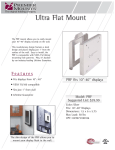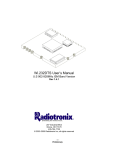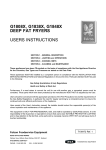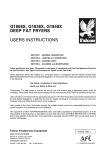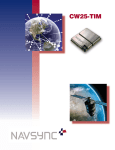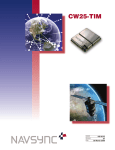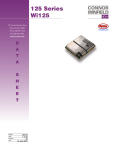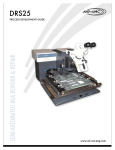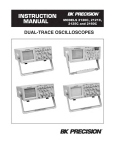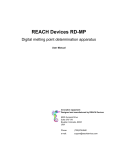Transcript
MODULE INSTALLATION GUIDELINES Form: MIG-001 Revision B General Production Guidelines 1. 2. 3. 4. Radiotronix designs modules that are formed into a hybrid surface mount package which allows both manual and automated placement. These modules contain descrete components, therefore the assembly procedures utilized by automated or manual techniques are critical for the performance after installation on the end users product. Radiotronix reccommends the following procedures be followed by all assembly personnel. Proper ESD precautions are required while handling Radiotronix modules Manual Assembly 1. 2. 3. 4. The primary mounting surface for the module is located on the bottom pad surface. Castellations have been provided that run perpendicular to the pad surface beneath. This design allows for proper heat transfer and solder wicking to the bottom side. It is recommended that the user carefully align and tack one corner of the module then move sequentially around the module. The end user layout pads (see user’s manual for suggested pad layout) should extend out slightly from the module to allow a fine tip soldering iron to heat the pad and castellation simultaneously. 5. Use a fine point conical tip to heat the modules castellation and board pad simutaneously. 6. Apply .020 solder wire to the pad where the castellation contacts. The solder will wick properly to the underlying surface providing a secure electrical connection. Automated Assembly 1. 2. Modules have been designed to be compatable with techniques utilized in an automated process. Due to the complexity of the module, additional attention is required in comparison to other component types. 3. 4. The reflow temperature profile is a critical point for creating a consistant solder connection. Any shock that may be applied during the reflow movement process should be avoided. 5. If a shock is applied during the liquified state of reflow, the components may shift causing malfunction of the module. Recommended Soldering Parameters (RoHS Compliant) Printing/ Dispensing Reflow Profile • Stencil: 0.006 inch (6 mil) • Ramp @ 1.0 – 2.0oC/sec to 130oC • Squeegee: Metal (recommeded) • Slow ramp from 130oC to 180oC for 90- 120 seconds • Ramp @ 0.5- 2oC /sec to peak temperature 230oC to 250oC TAL for 40- 80 seconds • Ramp down to R.T. @ 1- 3oC/sec Note • Please note that the reflow profiles listed are guidelines only and adjustments may be necessary to ensure proper wetting of the solder. Recommended Soldering Parameters (Non-RoHS Compliant) Printing/ Dispensing Reflow Profile • Stencil: 0.006 inch (6 mil) • Straight ramp up profile preferred • Squeegee: Metal (recommeded) • Ramp up from ambient temp. to peak temp. of 210oC to 225oC @ 1oC /sec • TAL (Time Above Liquidus) = 45 to 75 seconds • Ramp down to R.T. @ 1- 3oC/sec Note • Please note that the reflow profiles listed are guidelines only and adjustments may be necessary to ensure proper wetting of the solder. Washibility 1. 2. 3. 4. 5. If modules are assembled with a water soluble process special attention to cleaning will be nessesary. All flux residue should be removed to ensure performance, as well as reduce the potential of corrosive activity. Modules which have been washed must be completely dry before power-up or testing. Ultrasonic cleaning systems should not be used. Proper support during wash is nessesary to eliminate any mechanical stress which could damage components on the module. The information contained herein is based on data considered accurate and is offered at no charge. No warranty is expressed or implied regarding the accuracy of this data. Liability is expressly disclaimed for any loss arising from the use of this information.
